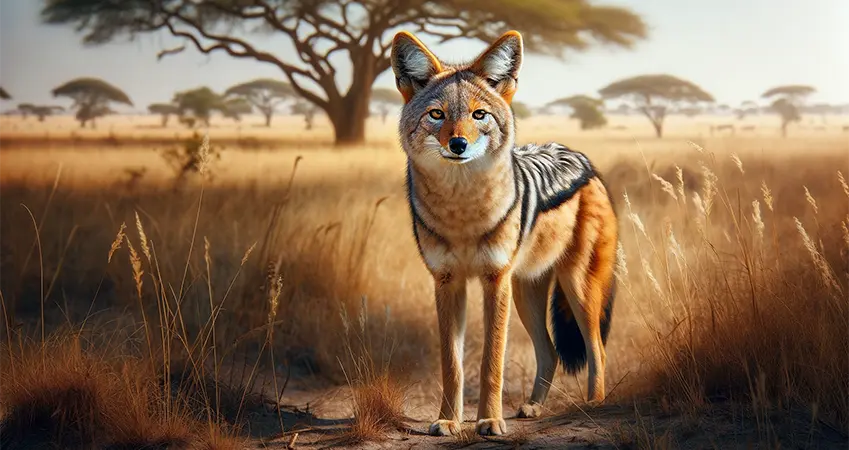Jackals are fascinating creatures known for their adaptability and cunning nature. These canines are found across various regions, each offering a unique set of environmental conditions that shape their behavior and survival strategies. This article delves into the diverse habitats of jackals, highlighting how these environments influence their lifestyle and ecological role.
Grasslands and Savannas
One of the primary habitats of jackals is the grasslands and savannas of Africa. These open landscapes provide ample space for jackals to hunt and roam. The abundance of prey, such as small mammals, birds, and insects, makes these regions ideal for sustaining jackal populations. The tall grasses offer excellent cover for stalking prey and evading larger predators. The savannas’ seasonal changes also play a crucial role in the life cycle of jackals, influencing their breeding and feeding patterns.

Woodlands and Shrublands
Jackals are also commonly found in woodlands and shrublands. These areas provide a mix of open spaces and dense vegetation, offering both hunting grounds and hiding spots. The varied terrain supports a diverse range of prey, from rodents to reptiles, enabling jackals to have a flexible diet. The dense shrubbery provides shelter and breeding sites, which are essential for raising their young. The presence of water sources in these regions also ensures that jackals have access to essential resources throughout the year.
Deserts
In contrast to the lush grasslands and dense woodlands, some jackal species have adapted to survive in arid desert environments. The ability to endure extreme temperatures and scarce water supplies showcases the remarkable adaptability of jackals. They often inhabit areas with sparse vegetation, where they rely on their keen senses and opportunistic feeding habits to find food. Desert jackals have developed strategies to conserve water and energy, such as being primarily nocturnal to avoid the daytime heat.

Mountains and Highlands
Mountainous regions and highlands present a challenging habitat for jackals, yet some species thrive in these areas. The rugged terrain offers protection from larger predators and human encroachment. Jackals in these regions often hunt smaller mammals and birds, taking advantage of the varied topography to ambush prey. The cooler climate and higher altitude also influence their behavior, leading to unique adaptations compared to their lowland counterparts.
Urban Areas
In recent years, jackals have increasingly been spotted in urban and suburban areas. This shift is largely due to habitat loss and human expansion into natural territories. Urban jackals exhibit remarkable adaptability, often scavenging for food in garbage bins and feeding on small domestic animals. While this can lead to conflicts with humans, it also highlights the jackal’s ability to thrive in diverse and changing environments. Urban habitats offer a unique perspective on the resilience and adaptability of these creatures.

Conclusion
The diverse habitats of jackals—from grasslands and woodlands to deserts, mountains, and urban areas—demonstrate their incredible adaptability and survival skills. Understanding these habitats is crucial for conservation efforts, as it helps identify the challenges and threats jackals face in different environments. By preserving their natural habitats and mitigating human-wildlife conflicts, we can ensure the continued survival of these remarkable canines. The jackal’s ability to adapt to various ecosystems underscores their vital role in maintaining ecological balance and biodiversity.







